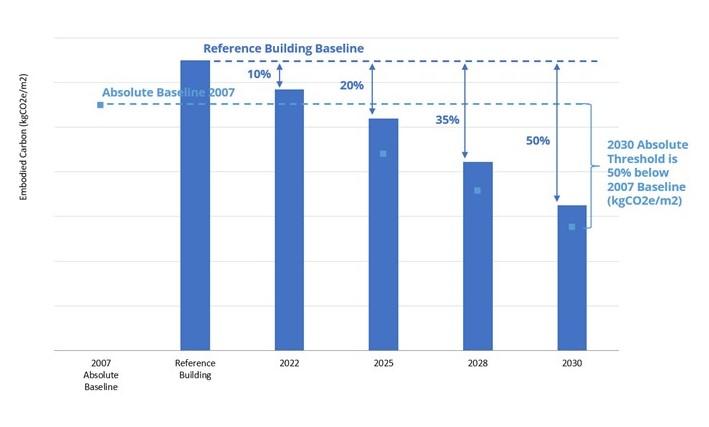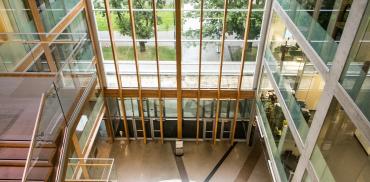
To achieve the targets set in UBC's Climate Action Plan 2030 (CAP2030), UBC has developed policy to reduce embodied carbon.
Embodied carbon represents a significant impact and, as operational emissions are reduced, it represents an even greater proportional share of the impact. Stepped reductions (shown in the diagram below) will achieve the 50% reduction target for embodied carbon in 2030 and allow the construction industry to increase capacity and for supply chains to improve, while adjusting to lower carbon solutions gradually.
Reduction in embodied carbon can be achieved by using strategies such as:
- designing buildings that use less material
- choosing materials that have lower embodied carbon (e.g. low carbon concrete).
Policy Pathway
In alignment with the policy pathway, UBC’s current requirement is a 10% reduction in embodied carbon from a defined reference building baseline. The chart below shows the recommended incremental reduction targets to align with emissions reductions goals set in CAP2030 for both the Vancouver and Okanagan campus.

What is Embodied Carbon?
Embodied carbon is the greenhouse gas emissions associated with the production, transportation, construction, maintenance, replacement, and disposal of building and construction materials. Embodied carbon, combined with operational emissions arising from building operations (e.g. from energy use), define the whole lifecycle carbon impact of a building.

